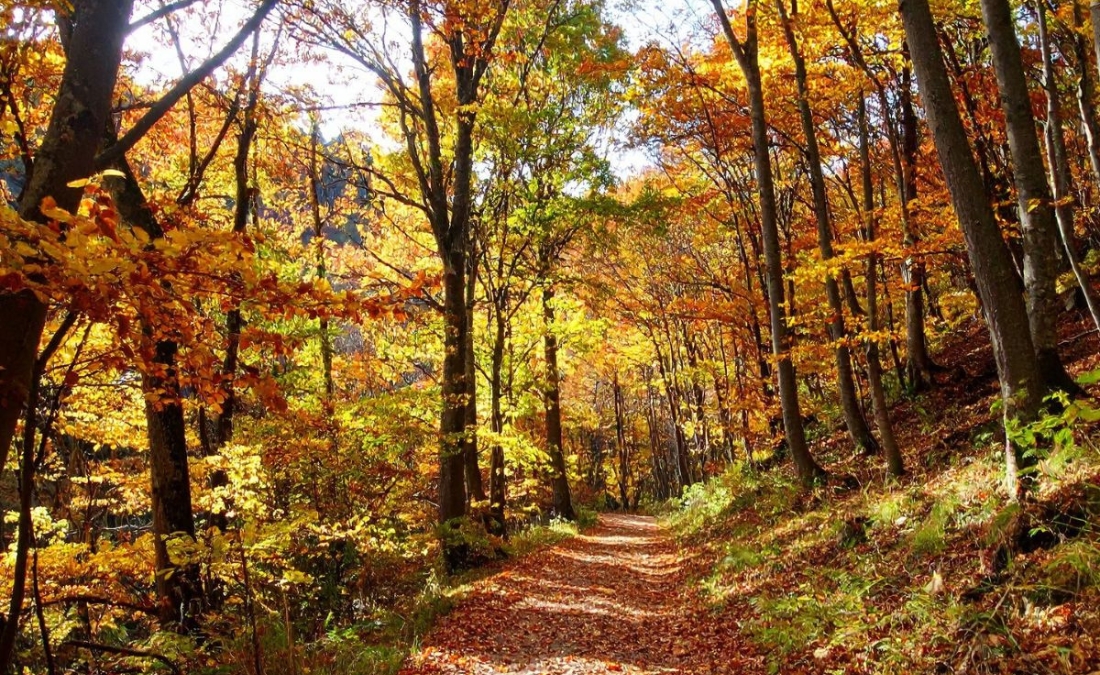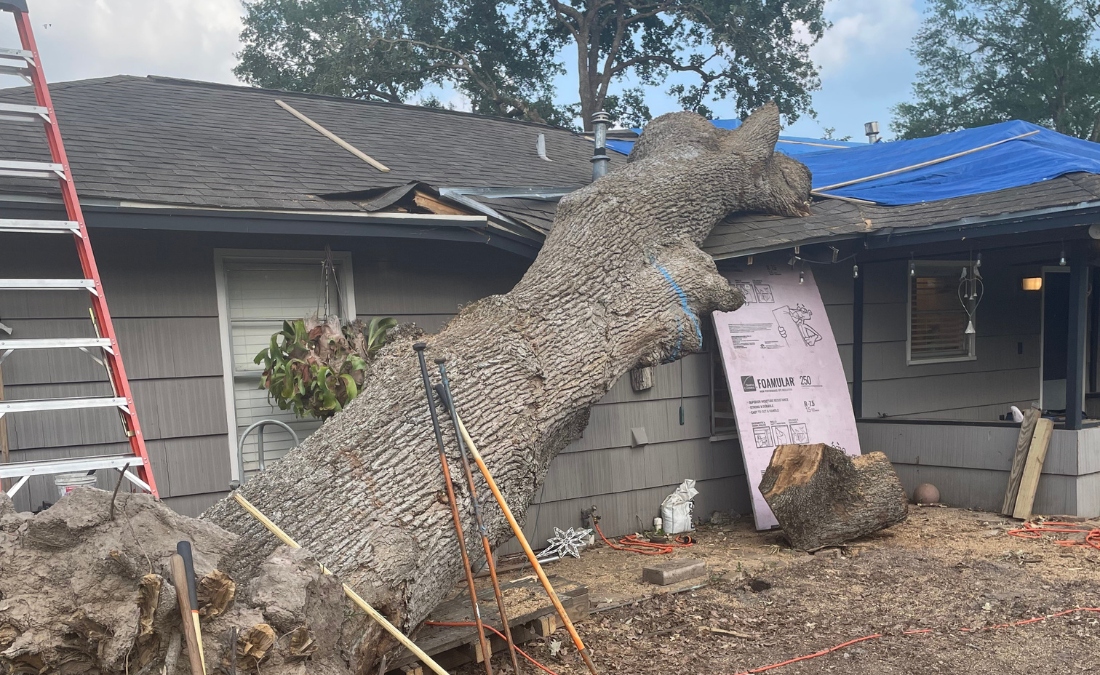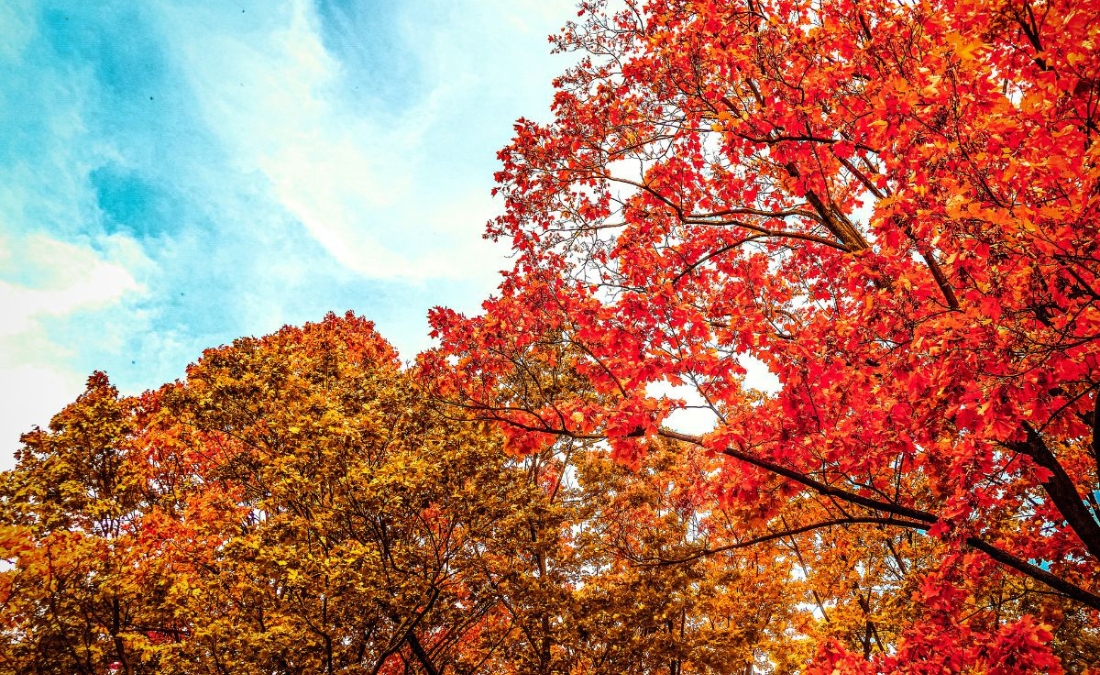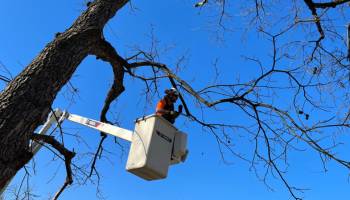The Hidden Risks of Storm-Damaged Trees in Wichita
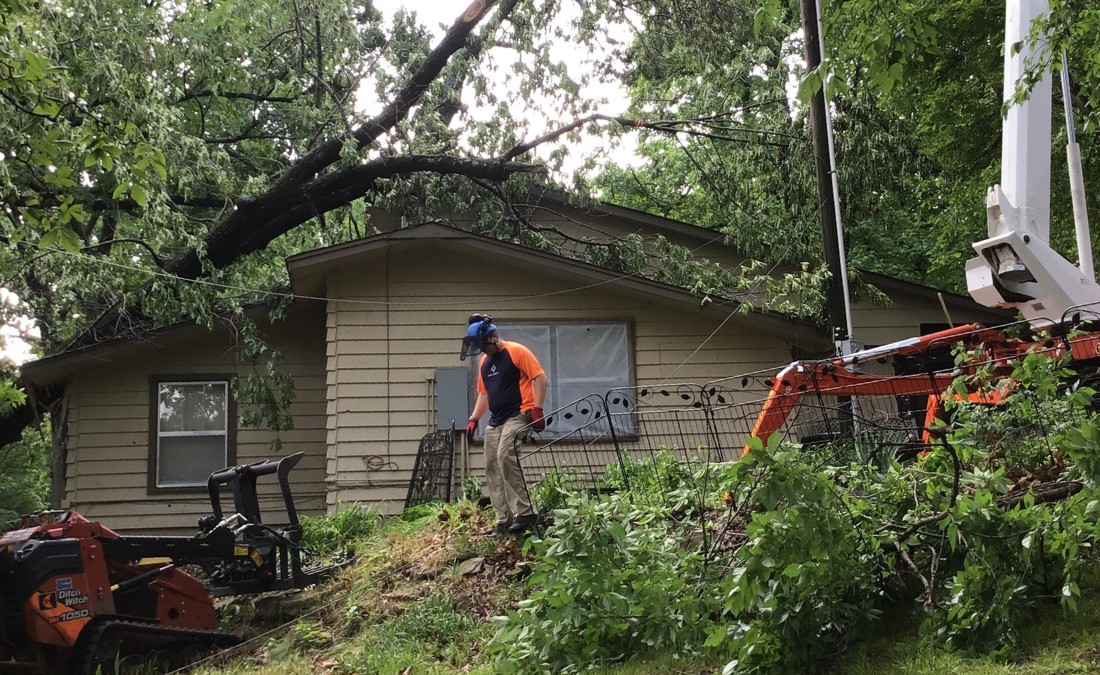
Just because a tree survives the storm doesn’t mean it’s safe. Learn how storm-damaged trees can suffer from hidden stress, decay, and disease over time.
Storm-damaged trees might still be standing, but that doesn’t mean they’re in the clear. Cracks, broken limbs, or even subtle changes in the canopy can be early signs of stress or disease – especially when a tree is already weakened from high winds or heavy rain. Learn how extreme weather leaves your trees more vulnerable to diseases and stress and what kind of damage to look for.
Key Takeaways:
- Storms in Wichita make trees vulnerable to insects and diseases through wind damage, bark injuries, and soil saturation.
- Storm-damaged trees are more vulnerable to specific threats, such as insect attacks, disease infections (including Dutch elm disease and anthracnose), and root damage.
- Preventative measures, like proper pruning, cabling and bracing of mature trees, planting in groups, and encouraging root health, can help trees withstand weather damage.
- When you notice signs of stress or disease in your trees after a storm, it’s best to consult a Certified Arborist who can diagnose the specific issue and recommend appropriate treatment.
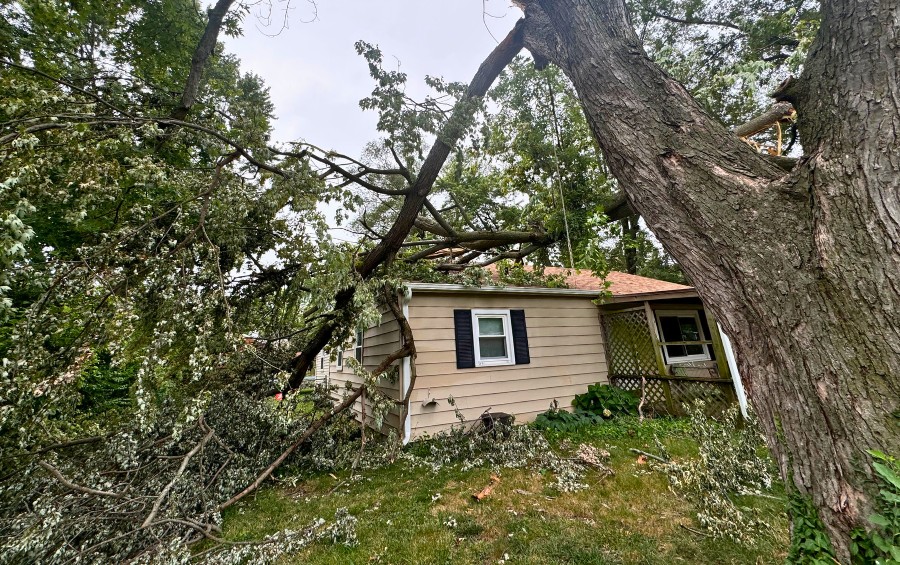
Why Are Trees More Vulnerable After a Storm?
Storms are among the most stressful natural events a tree can endure, and the climate here in Wichita can exacerbate these problems.
Wichita is one of America’s windiest cities, with multiple examples of wind speeds approaching or eclipsing 100 miles per hour. This leads to storms with high winds that damage trees and can send them flying.
“After a storm, a tree might have cracks, broken branches, or missing bark—and that’s like leaving the door open for bugs and disease. Until the tree can heal those wounds, it’s vulnerable. And the more stress it’s under, the harder it is for the tree to bounce back.” – Arian Bebermeyer, Arbor Masters Arborist Advisor
Heavy rain or snow also increases the stress on your trees. The precipitation will saturate the soil, a problem that is more common for residents of Sedgwick County with clay soil. Even well-drained soil, like the Wichita series, can end up waterlogged after a heavy downpour.
Saturated soil can lead to the development of root rot and can encourage diseases and mildew.
Typical Signs Something is Wrong with Your Tree After a Storm
The signs of stress on trees after storms, especially winter ones, may not become apparent immediately. It might take a few weeks or months for the problem to manifest itself and become apparent. For example, a broken branch may not die right away, but it may wilt and die off slowly.
Some common signs to look for that could indicate stress or disease in your storm-damaged tree include:
- Dead patches in the canopy
- A tree developing a new lean
- Discolored or damaged foliage
PRO TIP: Many of the signs of stress and disease in trees after storms can also point to other issues. Don’t jump to conclusions about what is wrong with your tree. Have an arborist inspect your trees after a storm.
Damage and Stress a Tree Can Sustain After a Storm
Once the storm is over, you may think the worst is over for your tree. However, the damage from the storm, such as broken branches and saturated soil, can lead to further complications for your tree. A storm-damaged and vulnerable tree is susceptible to several problems, including:
- Insect Attacks: Storm-damaged trees are like a magnet for insects. When branches break or tear, they create open wounds that make it easy for pests to move in. Many insects are drawn to the scent of fresh damage and use those entry points to start attacking the tree—making recovery even harder.
- Disease Infection: Some insects also carry diseases that they can spread to your trees. This can lead to fatal problems, like Dutch elm disease or further oak decline. Monitor your tree for several weeks after a storm. If you notice any signs of disease, have an arborist make recommendations on whether treatment is possible or removal is the only choice.
- Root Damage: Saturated soil can lead to roots dying or rotting. Without enough healthy roots to support the tree’s continued growth, leaves will die and cause dead patches in the canopy. Roots dying will also reduce a tree’s ability to anchor itself into the ground, making it more likely to fail during the next storm.
Frequently Asked Questions About Storm-Damaged Trees
Storms and their role in weakening trees are a significant concern for Wichita homeowners who want to protect the investment they’ve made in their landscape. To help you better understand and prepare, we’ve compiled some common questions to help educate you on the subject.
What should I do when I notice the signs of stress in my tree after a storm?
If you notice your tree is leaning or has dead patches in the canopy, call an arborist and have them inspect your trees. Identifying the exact cause of the abnormality is difficult for most people, but an arborist will be able to explain the issue with your tree and how best to fix it.
What diseases should I watch out for after a storm?
Some tree diseases in Wichita that are concerning after a storm include:
How can I protect my tree from storms and diseases that follow?
It’s always better to prepare your trees for storms than to deal with the damage afterward. While no tree is completely safe from severe weather, there are a few ways you can lower the risk of storm damage, such as:
- Pruning to remove weak branches that are prone to breaking in a storm.
- Cabling and bracing to strengthen weak sections of mature trees.
- Planting trees in groups so one does not have to bear the brunt of the storm.
- Encouraging good root health by planting properly and mulching around the tree.
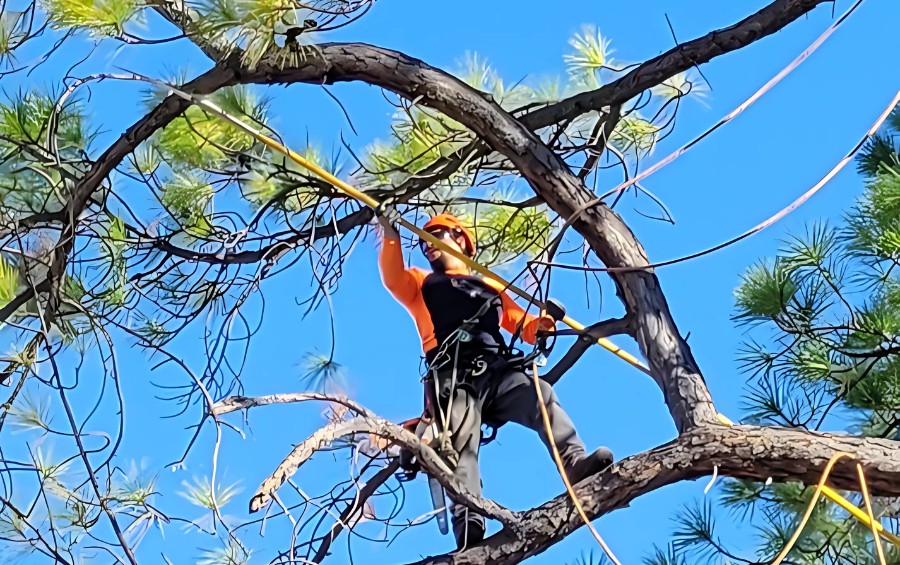
Arbor Masters Can Help You Care for Your Trees After a Storm
Being educated on the signs of stress and disease in your trees after a storm allows you to identify problems and get them the help they need. When you need assistance diagnosing precisely what your tree is dealing with, the expert team at Arbor Masters can help.
Our team employs ISA Certified Arborists who are experts in tree care and can easily identify issues with trees. They’ll prescribe a treatment that can help get your storm-damaged trees back to proper health. Call us today at 316-838-3111 or request a quote online.

Get the latest local news, tree care tips, special offers, and company updates directly to your inbox! It's easy to subscribe and there's no spam - we promise.
"*" indicates required fields


